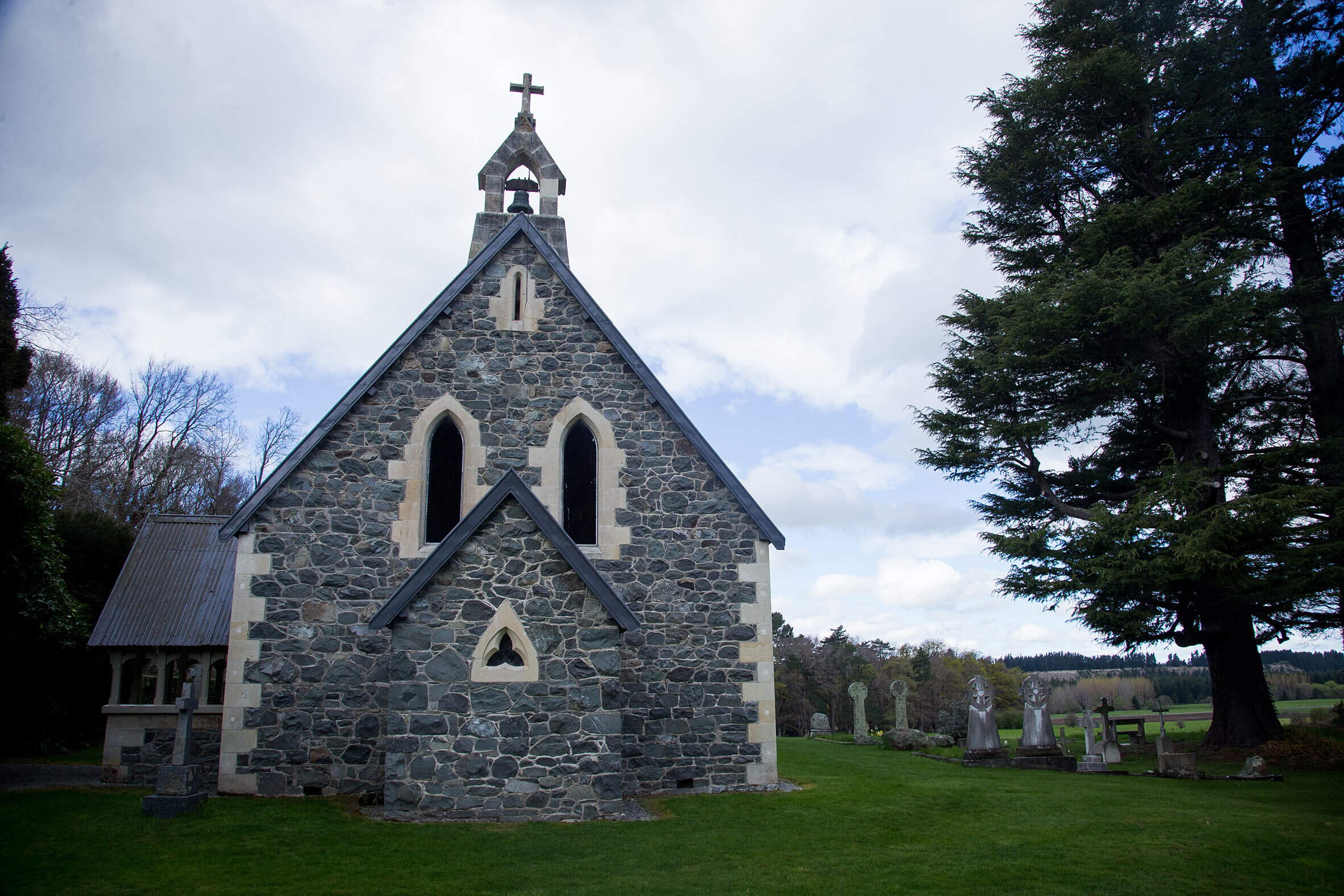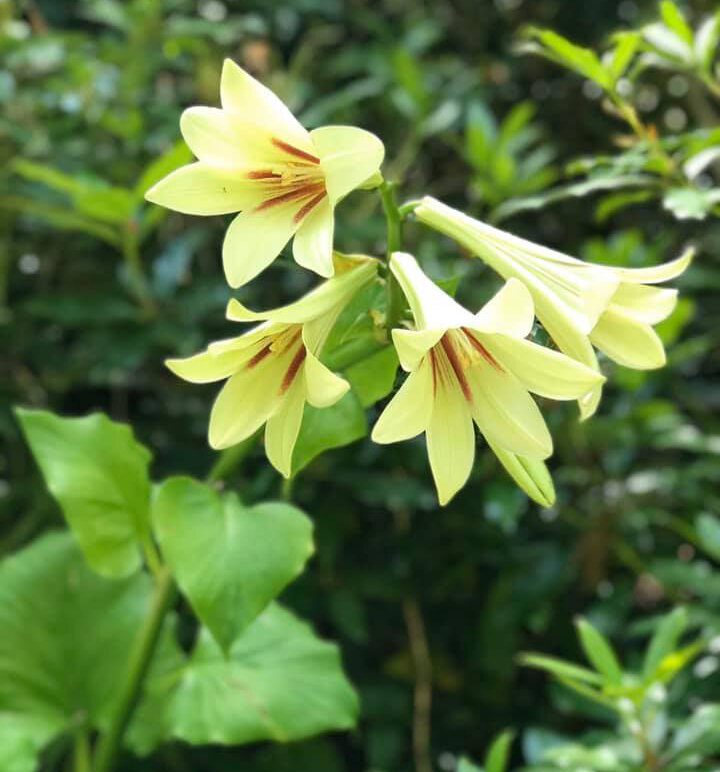
The Church of the holy innocenTS
In 1866 John Barton Acland (JBA) conveyed land to the Church Property Trustees for a Church and burial ground. This was situated across the stream from the homestead and gardens on a hill overlooking the Rangitata River.
Emily Weddell Acland, wife of Mr Acland, laid the foundation stone for the Church on 14 December 1868.
A year later, on the 12 December 1869, the consecration service was conducted by the Right Reverend H.J.C Harper, the first Bishop of Christchurch and JBA’s father-in-law.
The Church was named the Church of the Holy Innocents in remembrance of the first four young children who were buried there.
JBA envisaged the Church serving the station and being the centre of the rural village that he hoped would soon arise around Mount Peel, as was the custom in England.
The building is constructed of Greywacke river stone from the Rangitata River and limestone from Mount Somers bought over by bullock dray. The interior has used timber milled from the Peel Forest bush, mainly Black Pine, White Pine and Totara.
Each year, since 1882, the old year has been tolled out and the new year welcomed on the bell of the Church of the Holy Innocents.

The Darfield earthquake on 4 September 2010 caused considerable damage to the Church as the East gable, the largest opening, partially collapsed and the Acland Memorial window was severely damaged.
A community effort led by John and Rosemary Acland saw funds being raised to enable the restoration project to take place. In September 2017 a re-dedication service was held to celebrate the re-opening with Bishop Victoria Matthews presiding over the service.
Today the Church remains a special place of worship and is also popular amongst tourists and locals, who like to visit and enjoy the peaceful serenity of the Church and graveyard.
THE GARDEN
JBA loved trees and wanted to reproduce a little of his family home and garden at Killerton in Devon, here in New Zealand.
“I hope, if I live, to do my share to reproduce England in this southern hemisphere”.
Acland and Tripp imported trees from the time they arrived on the property and today there is a list of protected trees in the garden resulting from those early plantings.
Oaks, Elms, Wellingtonians, Douglas Firs and Cedars dating back from 1855 are among some of the oldest exotic trees in South Canterbury.
The trees form the backdrop of a wonderful extensive garden, with a large vegetable garden and orchard, which has been loved and cared for by each successive generation. The garden and its development has been a passion for all those who have lived here and further tree plantings have continued around the property.
The garden is well known for the flowering of the Himalayan Lily – Cardiocrinum giganteum, that have naturalised underneath the stand of oaks in the driveway and throughout the garden. The lilies were originally housed in a glass conversatory that stood on the North side of the homestead, and when that was blown down in a fierce norwest wind, the lily seeds were scattered throughout the garden.
Every second year we open the garden to the public to coincide with flowering of the lily, which has become known as the Mount Peel Lily Day.
Lily Day At Mount Peel
The annual Lily Day at Mount Peel Station is a charity event and always a special day out for the whole family.
It was reintroduced by Rose and Johnny in 2013 after a hiatus of number of years, raises funds for the Geraldine Parish via a $15 entry fee at the gate (children are free). Visitors are welcome to bring their own picnic and can wander through the extensive 20 acres of garden at their leisure.
The popular giant Himalayan Lily, cardiocrinum giganteum, has creamy white trumpet flowers and flourishes in the wet summers and harsh winters at Mount Peel and they can grow more than 3 metre tall. Johnny Acland supposed an Acland ancestor somehow sourced the plants from the Himalayas.
For more information on the annual Lily Day follow us on Facebook.











